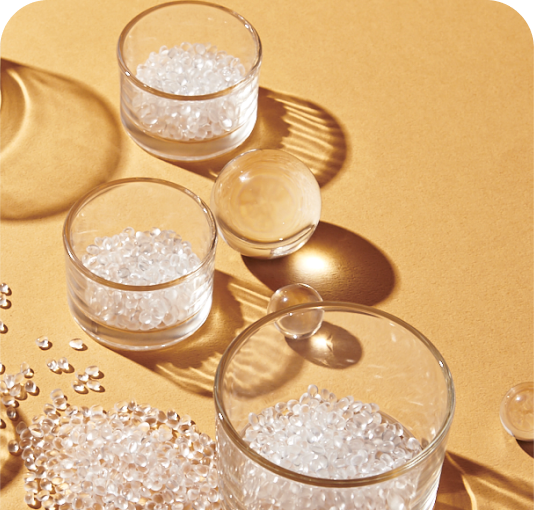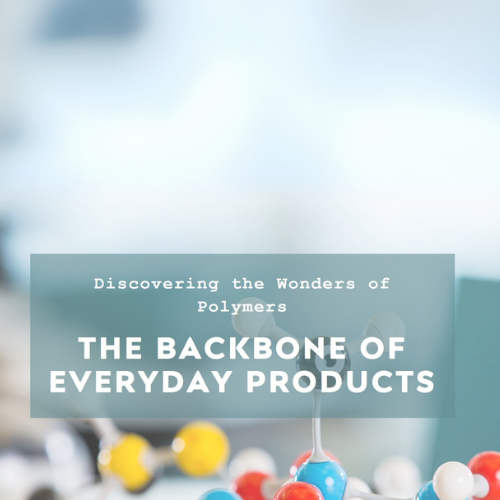

Polymers: The Invisible Backbone of Everyday Products
Published on: January 15, 2025
Author: Team JITSY
Did you know that polymers like PVC and PE make up over 70% of the materials used in modern packaging? These engineered materials have become indispensable across industries, offering unparalleled versatility and cost-effectiveness. Yet, their significance goes largely unnoticed, even as they quietly form the backbone of everyday products we rely on.
Let's break it down, industry by industry, to explore how these unsung heroes are transforming business operations and ensuring product quality.
Where Polymers Shine
Polyvinyl Chloride (PVC) and Polyethylene (PE) are two of the most widely used polymers, touching almost every aspect of our lives. Here’s how they’re making waves across industries:
1. Packaging
From the food you eat to the medicines you rely on, PVC and PE play a crucial role in keeping products safe and intact.
- Flexible Packaging: PE dominates food wraps and moisture-resistant containers, while PVC is a go-to for oxygen- and moisture-barrier films, ensuring extended shelf life.
- Rigid Packaging: PVC’s strength makes it perfect for pharmaceutical blister packs and consumer goods packaging. It’s durable and can take on complex shapes, offering a protective and aesthetic edge.
2. Automotive
Beyond packaging, polymers are shaping the way vehicles are built. Lightweight and durable, PE is used in fuel tanks, while PVC finds itself in interior fittings like dashboards and door panels. This reduces vehicle weight—leading to improved fuel efficiency and lower emissions.
3. Construction
PVC is a favorite in the construction sector, known for its durability and versatility in piping, window frames, and flooring. PE, on the other hand, scores high in insulation materials, making buildings more energy-efficient.
4. Pharmaceuticals
The pharmaceutical industry’s trust in PVC/PE composite films is a testament to their reliability in preserving sensitive products. From blister packs to protective medicine casings, the polymers ensure product integrity with unmatched protective qualities.
5. Footwear
Polymers have revolutionized the footwear industry by offering unmatched comfort, durability, and design freedom. Polyurethane (PU) & Ethylene Vinyl Acetate (EVA) are widely used in making lightweight, flexible soles that provide cushioning and support, while PVC and PE are essential in creating water-resistant shoes and protective boots. These materials enable manufacturers to offer a diverse range of affordable and high-quality footwear options that cater to various consumer needs.
6. Electronics
In the realm of electronics, polymers play a pivotal role in enhancing device safety and performance. Polyethylene is a key component in insulating wires and cables, safeguarding against electrical hazards and ensuring reliable signal transmission. Additionally, PVC is favored for its flame-retardant properties and is often used in the insulating layers of delicate electrical components, contributing to safer and more resilient electronic devices.
7. Textiles
The textile industry benefits significantly from polymers such as polyester and nylon, which are favored for their strength, elasticity, and resistance to abrasion. These materials elevate the quality and aesthetic appeal of clothing, sportswear, and outdoor gear. Their easy-care properties and durability make them indispensable in producing versatile fabrics that maintain their form and function over time.
8. Agriculture
In the agricultural sector, polymers like polyethylene and polypropylene are vital for the production of greenhouse films, irrigation tubing, and silage films. These materials help optimize growing conditions, improve water efficiency, and protect crops from environmental stressors. As a result, polymers contribute to sustainable farming practices and increased agricultural productivity.
By understanding the integral role that polymers play in these diverse industries, we can appreciate how they enhance product quality, promote sustainability, and support innovation. Polymers are indeed the silent yet powerful ally in our everyday lives, consistently contributing to progress across multiple domains.
Why PVC & PE Lead the Pack
What sets PVC and PE apart from alternatives? Here are some of the standout advantages they bring to businesses and end-users alike:
- Durability: High tensile strength and resistance to tearing make these polymers a safe bet for shipping and storage.
- Cost-Effectiveness: Well-established production processes mean affordability without compromising performance.
- Barrier Properties: PVC provides excellent protection against gases, UV light, and moisture—key factors in preserving product quality.
A Balancing Act: Polymers & Sustainability
PVC and PE hold a significant share of the packaging and industrial materials market. However, with increased attention on environmental sustainability, the industry is exploring new solutions:
- Recyclable Materials: Companies are refining processes to make these polymers easier to recycle.
- Biodegradable Polymers: Research into eco-friendly alternatives aims to deliver the same performance while minimizing environmental impact.
The Economic Edge of Plastics
When it comes to cost-efficiency and economic advantages, plastics like PVC and PE often stand unrivaled. These polymers offer an extraordinary balance of affordability and performance, making them the material of choice across multiple industries. Compared to alternatives like metals or glass, plastics are significantly cheaper to produce, transport, and process. This economic benefit translates into competitive pricing for end users and increased profitability for manufacturers. Furthermore, the lightweight nature of plastics reduces transport costs and energy usage during production, contributing to overall savings. Despite growing concerns around environmental impact, the low cost of plastics continues to drive their widespread adoption, providing a compelling argument for their continued use as industries evolve toward more sustainable practices.
Dispelling the Myth: Plastics vs. Other Materials
The Misconception about Plastics
Many people believe that plastics are inherently worse for the environment than other materials. However, this is a misconception that doesn't take into account the full picture, particularly when it comes to carbon footprints.
Comparing Carbon Footprints
Let's examine the carbon emissions associated with the production of various materials. For instance, manufacturing metals like aluminum and steel emits significantly more greenhouse gases compared to plastics. According to the International Energy Agency, aluminum production releases approximately 11 tons of CO2 per ton of material, whereas plastics emit around 2 to 3 tons per ton. Similarly, glass, though often touted as a better alternative, requires high temperatures during production, leading to substantial energy consumption and carbon dioxide emissions.
The Real Issue: Recycling
The crux of the environmental problem with plastics isn't their inherent nature but rather the inefficiency of current recycling practices. Currently, only about 9% of all plastic ever produced has been recycled. The challenge lies in the complexity of recycling processes, which are often hindered by inadequate infrastructure and public awareness.
The Potential of Improved Recycling
Imagine if we could achieve a 100% recycling rate for plastics. The environmental benefits would be immense. A study by the American Chemistry Council suggests that increasing plastic recycling could reduce greenhouse gas emissions by up to 30% by 2050. By focusing on advanced recycling technologies and enhancing public recycling habits, we could transform how plastics impact the environment.
Towards a Sustainable Future
Instead of simply eliminating plastics, the focus should be on enhancing and implementing effective recycling systems. By doing so, we can continue to harness the benefits of plastics—like their lightweight nature and durability—while significantly reducing their environmental footprint. Through innovation in recycling technologies and improved global practices, we can work towards a more sustainable future, where plastics complement environmental goals rather than hinder them.
Our Commitment to Quality & Timely Supply
At JITSY, we understand how crucial PVC and PE are to your operations, whether you’re in packaging, automotive, or pharmaceuticals. That’s why we go beyond just providing raw materials—we ensure quality assurance and timely delivery to keep your business running seamlessly. Our expert team is here to help you source the best solutions, every time.
What Do You Think?
Which industry do you believe relies most on polymers like PVC and PE? Do you see any disruptive trends reshaping their use? Comment below with your thoughts—We’d love to hear your perspective!
If you’re ready to explore innovative, high-quality polymer solutions for your business, get in touch with us today. Together, we can build a more resilient and efficient supply chain.
Latest Articles
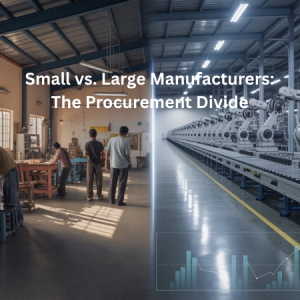
Small vs. Large Manufacturers: The Procurement Divide That’s Holding India Back
India cannot afford to grow unequally. If the vision is to become a global manufacturing powerhouse, we must ensure that procurement works for everyone – not just the big players.
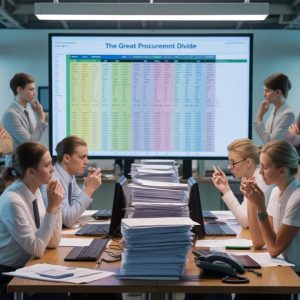
The Great Procurement Divide: Why Your Best Engineers Make Your Worst Buyers
“He knows everything about polymers—so let him handle the purchase too.”

Copy-Paste vs. Innovation
Is playing it safe actually the riskiest strategy? The uncomfortable truth about innovation avoidance in Indian manufacturing

The Credit Cycle Shift: Why 30-Day Payments Are Winning Hearts (and Wallets)
The Credit Cycle Shift: Why 30-Day Payments Are Winning Hearts (and Wallets)

The Great Inventory Debate
Just-in-Time vs. Just-in-Case After COVID
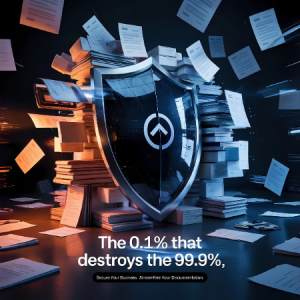
The 0.1% That Destroys the 99.9%: Why Documentation in B2B Trade Isn’t Optional Anymore
“Sir, you have my word.”
“It’s done. Dispatch tomorrow.”
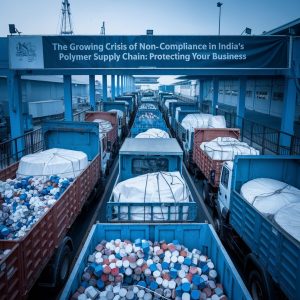
The Growing Crisis of Non-Compliance in India’s Polymer Supply Chain: Protecting Your Business
The Hidden Danger in Your Raw Material Procurement. Manufacturing sectors face increased scrutiny…

Complete Documentation Isn’t Optional – It’s Critical
Six months later, you receive a notice from the GST department that sends a chill down your spine…

5 Ways to Optimise Your Polymer Supply Chain
Explore five proven approaches that can transform your polymer supply chain…
Experience seamless supply chain solutions with JITSY. Your trusted partner for Just in Time Supply needs. Optimise operations today!
Quick Links
Contact
- connect@jitsy.in
- +91 9711562699
-
Salcon Rasvilas
Saket, New Delhi
India
